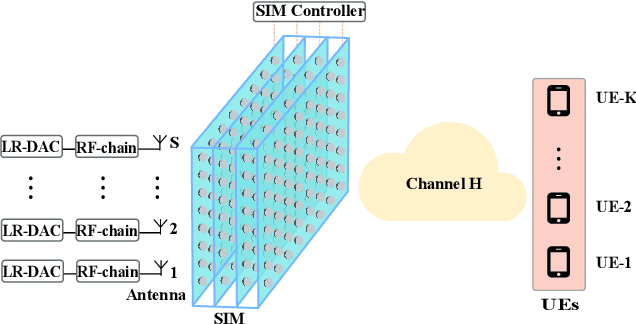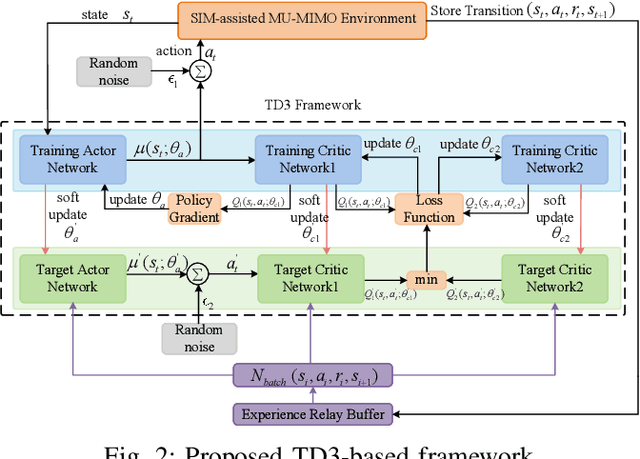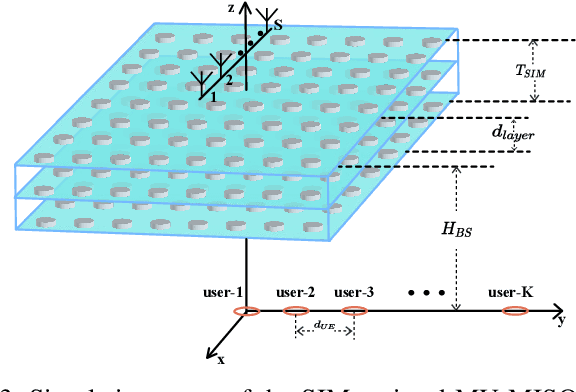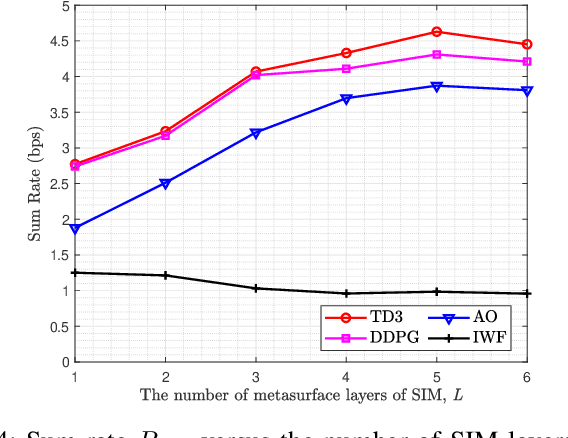Joint SIM Configuration and Power Allocation for Stacked Intelligent Metasurface-assisted MU-MISO Systems with TD3
Paper and Code
Aug 11, 2024



The stacked intelligent metasurface (SIM) emerges as an innovative technology with the ability to directly manipulate electromagnetic (EM) wave signals, drawing parallels to the operational principles of artificial neural networks (ANN). Leveraging its structure for direct EM signal processing alongside its low-power consumption, SIM holds promise for enhancing system performance within wireless communication systems. In this paper, we focus on SIM-assisted multi-user multi-input and single-output (MU-MISO) system downlink scenarios in the transmitter. We proposed a joint optimization method for SIM phase shift configuration and antenna power allocation based on the twin delayed deep deterministic policy gradient (TD3) algorithm to efficiently improve the sum rate. The results show that the proposed algorithm outperforms both deep deterministic policy gradient (DDPG) and alternating optimization (AO) algorithms. Furthermore, increasing the number of meta-atoms per layer of the SIM is always beneficial. However, continuously increasing the number of layers of SIM does not lead to sustained performance improvement.
 Add to Chrome
Add to Chrome Add to Firefox
Add to Firefox Add to Edge
Add to Edge